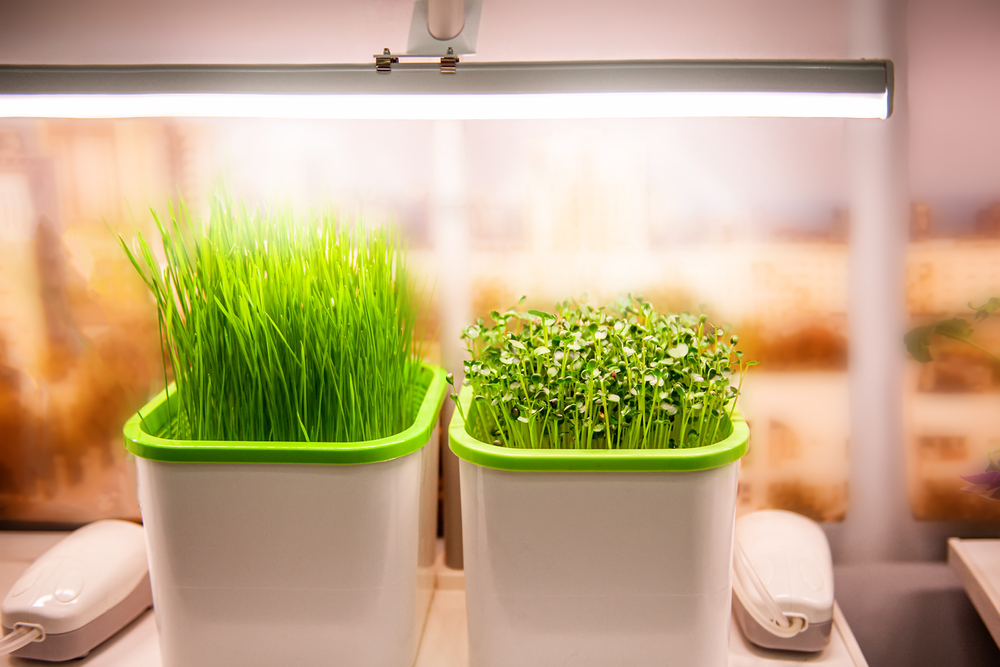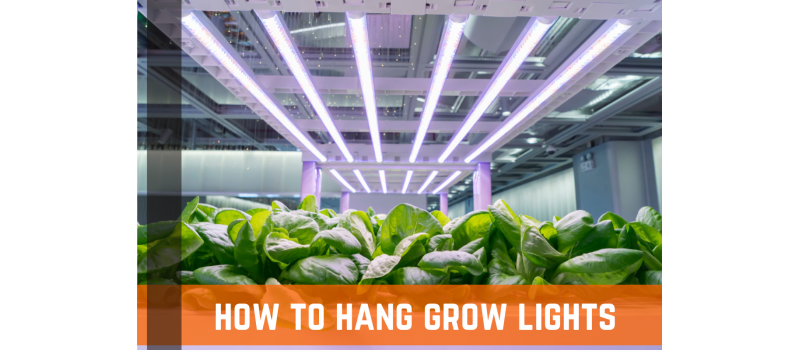When it comes to suspending your grow lights, you have a number of various options available to you to choose from. Your current setup, as well as the number of beams you have accessible in your growing space, will both factor into your decision on which one to go with. Those who have beams at their disposal can simply mount the lighting fixtures or a grow light mover system directly onto the beams.
It is doable to utilize screws and hooks that have been immediately applied to the beam. Be careful to check that they have the necessary support to hold up the lighting system that you intend to utilize.
Those who do not have beams will need to acquire a frame that they can lay over the top of the lights and then attach the lights to. Those who don't have beams will want to make this purchase.
You will discover that this option gives you more freedom, as you are able to more quickly relocate the entire setup to a different location if necessary. This is despite the fact that you will be need to purchase a frame, or frames, making it potentially more expensive for you.

Check to See That the Growing Area Receives the Appropriate Amount of Light
In order to establish how you will be hanging your plants, you need to take into consideration not only the amount of space you have available but also the number of lights that each plant will require.
For instance, if you have a space that is two feet by two feet and it needs lighting, you need have a lamp that is at least 250 watts. If you have a space that is 4 feet by 4 feet, you should use a bulb that has between 600 and 1000 watts of power, and you should verify that it will provide adequate lighting for all of the plants. You would require multiple lights of the same equivalence in order to adequately illuminate a space that is far larger.
Where Should the Grow Lights Be Placed in the Room?
Your plants could suffer harm or produce a harvest of lower quality if the grow lights are not positioned properly. Several considerations need to be taken into account before you can arrive at the best positioning. These include the size of your growing area, the types of plants you have, the size of these plants, the period of growth they are in, and a great many other factors.
When it comes to placement, there is no answer that is applicable to every situation that may possibly arise. First things first, you need to figure out how big the grow room is and then position the lights in such a way that they cover the bulk of the space. Make sure that the majority of the light, if not all of it, is falling on the canopy of your crop. This is the single most crucial item you need to pay attention to. Any light that penetrates the space between the plant canopy and the ground is lost.

The next stage is to have an understanding of the environmental circumstances and the obstacles that you might encounter. Determine where the "hot spot" is located. This is the location that sits smack dab in the middle of the grow light, as the name says. It is the region that receives the greatest amount of light.
If you don't keep an eye on it, this place could wind up causing harm to your plants. If the canopies are relatively narrow and the lighting hangs at a low level, the light may not be distributed evenly throughout the upper canopy.
In a similar manner, the reverse effect occurs when the ceilings are much too high and the edges are not adequately lit. This brings about what is known as the "Edge Effect."
Hanging Method for Grow Lights
You will find that the majority of manufacturers do not provide you with instructions for how to hang their lights inside of a closet; therefore, you will need to improvise. Due to the limited space, you will only be able to work with two or three plants. Because of this, you will want to decrease your height calculations by approximately 15 percent in order to reduce the edge effect that occurs as a result of the high ratio of walls to the smaller amount of floor space in a closet.

Employing the Use of a Light Timer
A light timer is an excellent purchase to make because it will come in handy during the flowering stage, when your plants will be subjected to a rigorous 12/12 light cycle. Since the timer will handle everything for you, you won't have to worry about trying to keep track of when it's time to turn the lights on and off. While you are hanging your grow lights, it is simple and quick to install these, and they are not expensive.
There is no one-size-fits-all solution when it comes to determining the ideal spacing that should exist among your artificial light and your plants. The most prudent thing you can do is get in touch with the business that manufactured your LED grow lamp to ask about their advice.
If you are working with a canopy that is on the smaller side, the best advice that we can give is to cut the distance between your lights by 15% using the figure from up above. Because there is a greater proportion of walls and floor area to plant canopy, this should be sufficient for mitigating any influence that may be caused by the edge.

